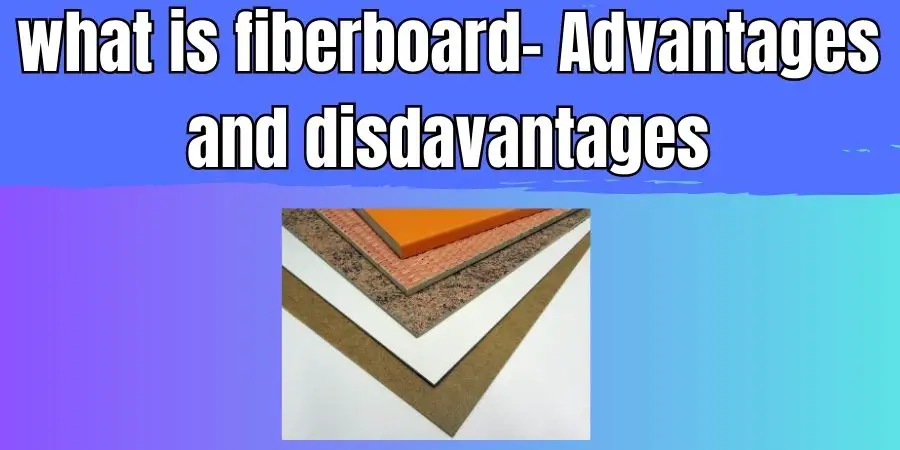If you’re asking about fiberboard, it’s a type of engineered wood product that is made by compressing and bonding wood particles or fibers together using adhesives. It’s also sometimes called particleboard.
Fiberboard is a popular alternative to solid wood because it’s more affordable and easier to work with. It’s commonly used for furniture, cabinets, flooring, and construction projects like wall and ceiling panels.
There are a few different types of fiberboard available, including medium-density fiberboard (MDF), high-density fiberboard (HDF), and low-density fiberboard (LDF). Each type has its own unique properties and uses.
While fiberboard has its advantages, like its affordability and versatility, it also has some disadvantages. It’s not as durable or strong as solid wood, and some types may contain formaldehyde or release harmful particles during the manufacturing process.
Table of Contents
Types of fiberboard
There are several types of fiberboard available, including:
- Medium-density fiberboard (MDF): This type of fiberboard is made from wood fibers and resin, and is denser and stronger than other types of fiberboard.
- High-density fiberboard (HDF): This type of fiberboard is similar to MDF, but is even denser and stronger.
- Low-density fiberboard (LDF): This type of fiberboard is less dense and weaker than MDF and HDF, and is often used for packaging and other non-structural applications.
Advantages of Fiberboard
Affordable
One of the main advantages of using fiberboard is that it is a cost-effective alternative to solid wood. It is typically less expensive to produce and can be purchased at a lower cost than many other building materials.
Easy to Work With
Fiberboard is also relatively easy to work with. It can be cut, shaped, and drilled using basic woodworking tools, making it a popular choice for DIY projects.
Versatile
Fiberboard is highly versatile and can be used for a wide range of applications, including furniture, cabinetry, and flooring. It is also available in a variety of thicknesses and densities, making it suitable for a range of projects.
Environmentally Friendly
Fiberboard is made from recycled wood fibers and other materials, making it a more environmentally friendly option than solid wood. It also produces less waste during the manufacturing process.
Disadvantages of Fiberboard
Not as Durable
While fiberboard is a cost-effective alternative to solid wood, it is generally not as durable or long-lasting. It is more susceptible to damage from moisture and impacts, and may not hold up as well over time.
Limited Strength
Fiberboard is not as strong as solid wood and may not be suitable for all applications. It may not hold up well under heavy loads or stress, making it less suitable for structural applications.
Contains Formaldehyde
Some types of fiberboard may contain formaldehyde, a known carcinogen that can be harmful to human health. It is important to choose low-emission fiberboard products to minimize exposure to this chemical.
May Release Harmful Particles
During the manufacturing process, fiberboard may release harmful particles into the air, such as wood dust and adhesives. It is important to wear protective gear when working with fiberboard to minimize exposure to these particles.
Alternatives to Fiberboard
If you’re looking for alternatives to fiberboard, there are a few options to consider depending on your specific needs and preferences. Here are some alternatives to consider:
Solid Wood
Solid wood is a traditional building material that has been used for centuries. It’s more expensive than fiberboard, but it’s also more durable and long-lasting. Solid wood is a good choice for applications where strength and durability are important.
Plywood
Plywood is another engineered wood product that is made by layering thin sheets of wood veneer together using adhesives. It’s more expensive than fiberboard, but it’s also stronger and more durable. Plywood is a good choice for applications where strength and stability are important.
Particleboard
Particleboard is similar to fiberboard, but it’s made by compressing wood particles together without using fibers. It’s less expensive than plywood, but it’s also less strong and durable. Particleboard is a good choice for applications where affordability is important, but where strength and durability are less important.
MDF
Medium-density fiberboard (MDF) is a type of fiberboard that is denser and stronger than standard fiberboard. It’s made by compressing wood fibers together using adhesives. MDF is more expensive than standard fiberboard, but it’s also stronger and more durable. MDF is a good choice for applications where strength and durability are important.





